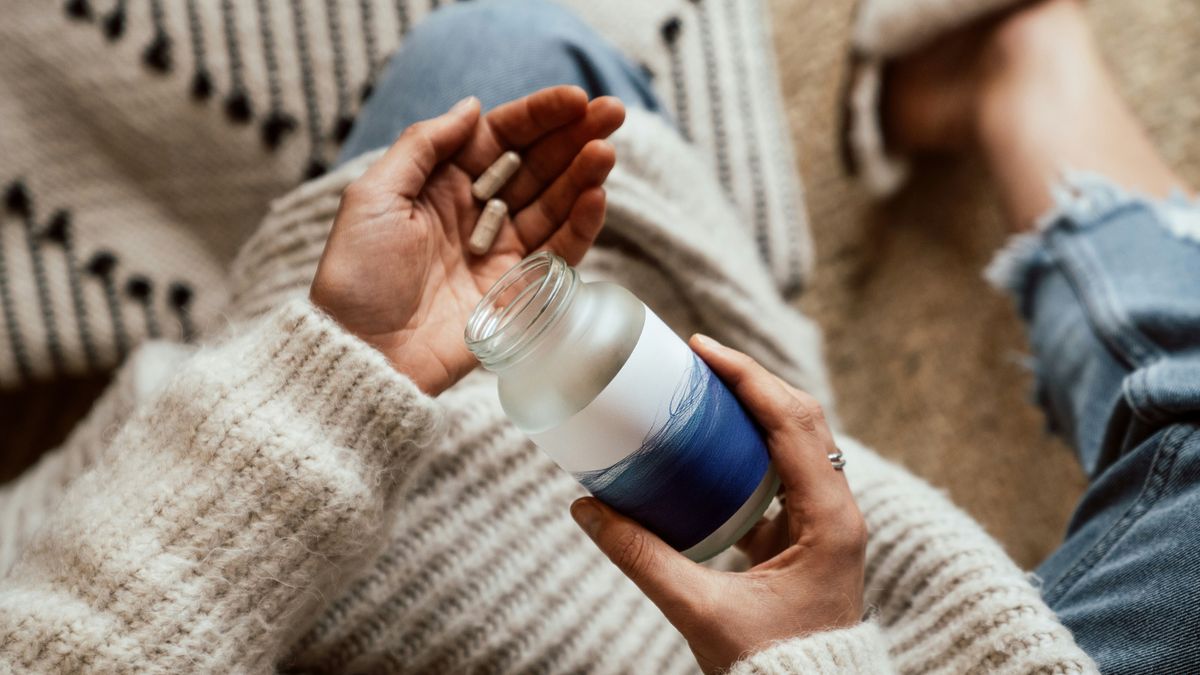NAD+ supplements for healthy aging and longevity: do they really work?

Why NAD+ is on everyone’s radar
Have you ever noticed how some individuals seem to maintain boundless energy and mental clarity, even as they age? While genetics, balanced nutrition, and regular exercise all play pivotal roles, recent discussions in the field of longevity have also zeroed in on nicotinamide adenine dinucleotide (NAD+). This vital molecule is often described as the “cellular power currency” because it influences numerous processes tied to healthy aging—most notably energy production, DNA repair, and overall metabolic function.
No one-size-fits-all solution
Despite the growing buzz, it’s important not to treat NAD+ as a magic bullet for longevity. Although emerging evidence shows that maintaining optimal NAD+ levels may support various facets of metabolic health, no supplement can singlehandedly stop or reverse aging. As with any health-related intervention, it’s wise to keep expectations grounded and consult a qualified healthcare provider before beginning a new regimen—especially if you have underlying medical conditions or take multiple medications.
A snapshot of the science
We already know NAD+ is crucial for redox reactions—those chemical processes in the body that generate energy and keep us alive. Research also links it to the regulation of certain genes involved in longevity and stress response. The idea behind NAD+ supplementation is that by boosting its levels, you might enhance these protective or restorative functions. Yet, while early studies offer promising insights, they are not conclusive; large-scale, long-term human trials remain limited.
Setting the stage
In the chapters ahead, we’ll explore the chemistry of NAD+, how it operates within key metabolic pathways, and why scientists believe it could be significant for healthy aging. We’ll also examine the rationale for using NAD+ precursors as food supplements, taking a critical look at the evidence—both supportive and skeptical. Remember: although NAD+ is garnering interest in scientific circles, proper lifestyle habits still form the bedrock of any long-term health strategy. Any supplement, including NAD+, should be viewed as a potential ally, not a cure-all solution.
Quick overview
NAD+: the basics
- What It Is: NAD+ (nicotinamide adenine dinucleotide) is a crucial coenzyme that appears in two forms, NAD+ (oxidized) and NADH (reduced).
- Why It Matters: It functions as an electron transporter, pivotal in energy production and various cellular processes.
Role in cellular health
- Energy Production: NAD+ supports glycolysis and oxidative phosphorylation, enabling efficient ATP generation.
- DNA Repair: Serves as a substrate for enzymes like poly(ADP-ribose) polymerases (PARPs), which are important for repairing DNA damage.
- Gene Regulation: Activates sirtuins, enzymes associated with metabolic regulation and aging.
Aging connection
- Declining NAD+: Levels often fall with age, potentially affecting energy and repair mechanisms.
- Longevity Research: Emerging studies suggest that supporting NAD+ might help sustain certain cellular functions, but human trials remain limited.
Supplementation
- Common Precursors: Nicotinamide riboside (NR), nicotinamide mononucleotide (NMN), and niacin (vitamin B3) are frequently marketed to boost NAD+.
- Safety & Side Effects: Users have reported mild issues like nausea and headaches, and high doses can pose risks such as liver strain.
- Clinical Research: Dosage and long-term efficacy are still under investigation; no consensus exists on optimal intake.
Current debate
- Evidence Gaps: While preliminary findings spark excitement, larger, more rigorous trials are needed to confirm potential health benefits.
- IV vs. Oral: Intravenous NAD+ is gaining attention for possible rapid effects, but oral supplements are more common and generally easier to access.
Practical considerations
- Holistic Approach: A balanced diet, regular exercise, and medical checkups remain foundational for well-being. NAD+ supplements may support, but not replace, these healthy habits.
- Professional Guidance: Always consult a qualified healthcare provider, especially if you take other medications or have pre-existing health conditions.
Disclaimer: Information provided here is for educational purposes only. Statements do not constitute medical advice. Always seek professional counsel for personal health decisions.
Chemistry of nicotinamide adenine dinucleotide
It might seem surprising that something so small can wield such profound influence over our cells, yet nicotinamide adenine dinucleotide (NAD+) is precisely that kind of molecule. Structurally, NAD+ consists of two nucleotides connected by a pyrophosphate bond—one containing adenine, the other containing nicotinamide. This design makes NAD+ a prime candidate for shuttling electrons during metabolic reactions. In its oxidized state, we call it NAD+, while its reduced counterpart—carrying extra electrons—goes by NADH. That simple difference between “plus” and “H” underpins a lot of vital energy transactions in the body.
You can picture NAD+ almost like a specialized courier: its “job” is to travel between different cellular sites, picking up and dropping off electrons. Whenever you eat a meal, portions of those nutrients end up being processed by metabolic pathways that rely on NAD+ to ferry electrons around. If this courier system weren’t in place, critical energy-producing processes would stall, leaving our cells, tissues, and organs starved for energy.
Functions and metabolic role
At its core, NAD+ is primarily an electron carrier. Think of it as the middleman that makes energy production—such as ATP synthesis—actually work. During glycolysis (the breakdown of glucose) and the citric acid cycle, NAD+ accepts electrons, becoming NADH. Those electrons later get handed off to the electron transport chain, creating the conditions needed to produce ATP, the main energy currency of the cell.
But the role of NAD+ goes beyond just energy. It also participates in redox reactions that help maintain a proper balance between oxidation and reduction in cells. Without this balance, cellular stress can escalate, potentially damaging proteins, DNA, and other essential components. Indeed, multiple studies point out that consistent NAD+ availability may support healthy metabolic function and help cells cope with stressors.
Biochemical pathways
NAD+ doesn’t just float around fully formed; our bodies synthesize and recycle it through several pathways. One such route involves precursors like nicotinic acid or nicotinamide, both of which are forms of vitamin B3. Another pathway involves nicotinamide riboside (NR), which many researchers consider one of the more efficient ways to bump up NAD+ levels.
Salvage pathways
Interestingly, not all organisms can synthesize NAD+ from scratch. Some rely heavily on salvage pathways, recycling breakdown products to create fresh NAD+. Even in humans, these salvage mechanisms are crucial, since NAD+ can be broken down by enzymes like CD38 during normal cellular activities. If the body couldn’t recapture and reuse NAD+ components, we’d likely burn through our NAD+ reserves much faster.
Variations across species
In certain pathogens—like Chlamydia trachomatis—the biosynthesis route is incomplete, forcing them to borrow NAD+ from the host. This underscores just how universal and indispensable NAD+ is across life forms. From simple bacteria to complex human cells, everyone needs that NAD+ “courier” to function properly.
Key takeaway
The chemistry of NAD+ might look simple at first glance, but don’t let that fool you. This coenzyme’s carefully arranged structure and pathways give it an outsized role in everything from helping to produce ATP to balancing cellular redox states. And while ongoing research continues to explore its wider implications, scientists agree that NAD+ is crucial for life as we know it.
Remember: none of this means NAD+ alone can fix every health woe. Rather, it’s a vital player in the body’s vast biochemical orchestra. Understanding how it works sets the foundation for discussing NAD+ supplementation in later chapters—and helps us separate genuine science from overblown claims.
Biological functions of NAD+
Energy production
One of the most widely discussed roles of nicotinamide adenine dinucleotide (NAD+) is its involvement in energy production. When we consume carbohydrates, fats, or proteins, our cells break down these nutrients to release energy. In this process, NAD+ acts like a shuttle, picking up electrons and hydrogen ions to form NADH. NADH then carries these electrons to the electron transport chain, where the bulk of the body’s adenosine triphosphate (ATP) is generated.
This cycle repeats endlessly in our cells. Think of NAD+ as a busy transporter: whenever there’s a job to do—whether it’s processing the food you ate for dinner or fueling your afternoon workout—NAD+ steps in to ensure electrons go where they need to. If NAD+ levels are too low, some of these vital energy-harvesting steps can slow down, potentially resulting in decreased cellular efficiency. However, it’s crucial to note that numerous factors affect energy levels, including diet, exercise, and overall health. No single molecule can completely offset poor lifestyle choices.
Glycolysis and oxidative phosphorylation
Within the broader context of energy production, two specific pathways get a lot of attention: glycolysis and oxidative phosphorylation.
- Glycolysis: Occurs in the cell’s cytoplasm, breaking down glucose into pyruvate while producing a modest amount of ATP. NAD+ is reduced to NADH during several steps of glycolysis.
- Oxidative phosphorylation: Takes place in the mitochondria. NADH from glycolysis (and other processes like the citric acid cycle) donates electrons to the electron transport chain. These electrons traverse protein complexes, ultimately generating ATP. In the end, NADH reconverts to NAD+, which is then recycled for future rounds of energy production.
This elegant handoff—NAD+ to NADH and back again—is critical for sustaining life. However, boosting NAD+ through supplementation does not guarantee a proportional increase in ATP production, especially if other parts of the metabolic machinery are compromised. More rigorous human trials are necessary before drawing firm conclusions about the extent of this effect.
DNA repair
Beyond its central role in energy, NAD+ also helps in DNA repair. Various enzymes, particularly the poly(ADP-ribose) polymerases (PARPs), require NAD+ to detect and mend DNA breaks. These enzymes act like cellular “handymen,” scanning genetic material for damage and initiating repair processes that help maintain genomic stability.
Why it matters: When DNA damage goes unchecked, it can accumulate over time, potentially contributing to age-related disorders. By serving as a substrate for PARPs, NAD+ supports crucial maintenance work that may help protect cells from excessive wear and tear.
Scientists emphasize, however, that while sufficient NAD+ might support healthy DNA repair, it’s not a magic wand that prevents all forms of genetic damage. Lifestyle factors—like avoiding excessive exposure to harmful chemicals or radiation—still play a huge role in safeguarding our DNA.
Regulation of cellular processes
If energy production and DNA repair weren’t enough, NAD+ is also integral to regulating various cellular processes:
- Sirtuins: These NAD+-dependent enzymes influence metabolic regulation, stress responses, and even certain aspects of aging. Sirtuins essentially “read” the cell’s environment—such as nutrient levels or stress markers—and adjust gene expression accordingly.
- Oxidative Stress Response: Some research suggests that adequate NAD+ levels might assist cells in managing oxidative stress, a natural byproduct of respiration that can damage cellular structures if left unchecked.
Although preliminary studies in animals are promising, experts agree that human-centered evidence is still emerging. Maintaining healthy NAD+ levels may be beneficial for cellular resilience, but no consensus exists yet on the optimal threshold for individuals or population groups.
Impact on aging and cellular health
A recurring theme in NAD+ research is its connection to aging. Many investigators note that NAD+ levels often decline with age, potentially affecting energy production, DNA repair efficiency, and the activity of enzymes like sirtuins. Over time, these changes could contribute to a higher risk of chronic illnesses, such as metabolic disorders or neurodegenerative conditions.
- Brain and cognitive function: Preliminary studies indicate that NAD+ might influence neuroprotective pathways, but robust clinical data in humans are still limited.
- Metabolic health: Some findings link higher NAD+ availability to improved metabolic markers in animal models, yet translating those findings to humans requires further research .
It’s crucial to highlight that no peer-reviewed study has confirmed that NAD+ can halt or reverse the aging process in humans. Instead, the more accurate statement is that NAD+ may assist in certain cellular maintenance tasks associated with healthy aging. Eating nutrient-dense foods, exercising regularly, and managing stress are also critical for long-term health and longevity.
Sources of NAD+
Although our bodies can synthesize NAD+ from dietary precursors, we also get some through direct dietary sources:
- Niacin (Vitamin B3): Found in foods like fish, meat, and whole grains.
- Nicotinamide: Another form of vitamin B3, also present in various meats, nuts, and seeds.
- Nicotinamide Riboside (NR) and Nicotinamide Mononucleotide (NMN): Commonly marketed as supplements to potentially boost NAD+ levels.
- Lifestyle factors: Regular exercise and adequate sleep can also support NAD+ metabolism.
While some advocates propose that supplementation helps correct age-related declines in NAD+, there is no unified medical consensus on “ideal” dosing. As always, it’s wise to consult a qualified healthcare provider to discuss individualized risks and benefits.
Bottom line: NAD+ is intertwined with many core functions—energy production, DNA repair, stress response, and more. Scientists see it as a linchpin of healthy cellular activity, but it’s far from a magic solution. Ongoing studies continue to deepen our understanding, yet for now, the safest bet is to view NAD+ as one component of a multifaceted approach to wellness.
NAD+ as a food supplement
Why Consider NAD+ supplementation?
With so much buzz around nicotinamide adenine dinucleotide (NAD+) and its ties to energy production and cellular repair, it’s no wonder that supplement manufacturers have begun marketing NAD+ precursors as potential supports for healthy aging. Scientists point out that NAD+ levels naturally decline with age, a trend linked to lower metabolic efficiency and reduced cellular resilience. The rationale behind supplementation is that by replenishing NAD+ or its building blocks, one might support the enzymes and pathways that help maintain overall vitality—though conclusive, large-scale human trials remain limited.
Mechanisms of action
At the most basic level, NAD+ supplements aim to boost the body’s pool of NAD+, thereby facilitating a range of cellular processes:
- Sirtuin activation: NAD+ serves as a co-substrate for sirtuins, enzymes linked to the regulation of metabolism, inflammation, and stress response.
- DNA repair support: Adequate NAD+ levels are believed to help fuel DNA repair enzymes, potentially maintaining genomic integrity over time.
- Oxidative stress management: Some research suggests that higher NAD+ availability may bolster the cell’s capacity to handle free radicals, although more rigorous human data are needed.
It’s crucial to note that increasing NAD+ availability does not guarantee a specific outcome—cells are complex, and numerous factors can modulate how well they respond to a boost in this coenzyme.
NAD+ precursors
The term “NAD+ supplement” is often a bit misleading. Rather than providing NAD+ directly, many products deliver precursor molecules that the body can convert into NAD+. Key precursors include:
- Niacin (Nicotinic Acid): A well-known form of vitamin B3 found in many multivitamins.
- Nicotinamide (Nam): Another form of vitamin B3 that also contributes to NAD+ synthesis.
- Nicotinamide Riboside (NR): Often sold as a more “efficient” precursor, since it may bypass certain steps in NAD+ biosynthesis.
- Nicotinamide Mononucleotide (NMN): Converts into NR before entering cells, although some debate remains about its direct bioavailability.
While marketing materials often tout one precursor as superior, the reality is that individual responses can vary. Researchers continue to investigate which forms are most effective and at what doses.
Clinical research and dosage
Several early studies and pilot trials have explored how NAD+ precursors might influence markers of metabolic health, muscle function, and even cognitive performance. Typical dosages in these studies range from a few hundred milligrams of NMN to about 1,000 mg of NR per day. However, it’s important to remember that no one-size-fits-all dosage has been definitively established, and individuals can respond differently based on health status, genetics, and other lifestyle factors.
Moreover, while initial results are encouraging—showing possible improvements in metabolic parameters—experts emphasize that more research, particularly large-scale, placebo-controlled studies, is needed to confirm safety and efficacy over the long term.
Safety and considerations
Before jumping on the NAD+ bandwagon, it’s crucial to consult a qualified healthcare provider, especially if you have existing medical conditions or take medications. The United States Food and Drug Administration (FDA) regulates supplements less rigorously than prescription drugs, so product quality and ingredient purity can vary widely.
- Potential interactions: NAD+ supplements might interact with certain medications, such as insulin or antidepressants, potentially altering their effects.
- Individual variability: Some people report mild side effects, including headaches or digestive issues, while others notice no immediate changes.
- Long-term data: In-depth studies on prolonged NAD+ supplementation are still emerging, so an element of caution remains prudent.
Key takeaway: The interest in NAD+ as a supplement stems from valid scientific questions about how best to sustain healthy cellular functions as we age. While early findings show promise, current evidence does not confirm that NAD+ supplements can prevent or reverse aging outright. If you’re considering adding an NAD+ precursor to your regimen, ensure you have a discussion with a knowledgeable health professional to weigh potential risks and benefits based on the latest research.
Safety and side effects
Why safety matters
Whenever new health supplements enter the spotlight—particularly those linked to longevity—it’s crucial to understand potential risks alongside possible benefits. Nicotinamide adenine dinucleotide (NAD+) supplements are no exception. While many people tolerate these supplements well, experts caution that individual responses can vary widely. Factors like pre-existing medical conditions, medication regimens, and overall lifestyle may influence how your body reacts to additional NAD+ intake.
Common side effects
Though clinical research on NAD+ supplementation in humans is still growing, early reports and anecdotal accounts have noted a few frequently mentioned side effects:
- Digestive discomfort: Some individuals experience nausea, bloating, or mild stomach upset, particularly if they take supplements on an empty stomach.
- Headaches and fatigue: Others report mild headaches or a general sense of tiredness shortly after beginning an NAD+ regimen.
- Skin flushing: Especially with forms of niacin or nicotinamide, some users experience warmth or redness in the skin, reminiscent of the niacin “flush”.
- Restlessness: Occasionally, people have reported feeling jittery or having trouble sleeping if they take NAD+ precursors too close to bedtime.
These side effects tend to be mild and transient in most cases, but they can still disrupt daily routines. If you notice persistent discomfort, it’s best to discontinue use and consult a healthcare professional.
Severe side effects
In rare instances, particularly at high doses or in those with underlying health issues, NAD+ supplementation may provoke more significant reactions:
- Liver toxicity: Excessive use of certain forms of vitamin B3 (niacin or nicotinamide) can strain the liver, so people with pre-existing liver conditions should proceed with caution.
- Drug interactions: Some research suggests potential interactions between NAD+ supplements and medications such as insulin or antidepressants, underscoring the importance of professional oversight.
- Allergic reactions: Although uncommon, any new supplement carries a remote possibility of allergic response, including rashes, itching, or respiratory difficulties. Anyone with known allergies to NAD+ or its components should avoid these products.
Considerations and warnings
Given the ongoing research and evolving landscape around NAD+ supplementation, many health professionals advise taking a measured approach:
- Consult a healthcare provider: Before adding NAD+ precursors to your regimen, seek personalized guidance—especially if you have conditions like diabetes or liver disease.
- Start low and go slow: If you opt to try NAD+ supplements, beginning with a lower dosage might help you gauge tolerance and reduce the risk of adverse effects.
- Monitor for changes: Keep track of any new symptoms—whether minor annoyances like headaches or more serious issues like abnormal blood tests—and share these with your provider.
Remember, dietary supplements in the United States are not held to the same regulatory standards as prescription medications. Quality can differ significantly between brands, making it essential to purchase from reputable manufacturers that conduct third-party testing.
Balancing risks and benefits
No supplement—NAD+ included—can guarantee improved health or slow down aging on its own. Well-rounded lifestyle choices (such as a balanced diet, consistent exercise, and stress management) remain central to any longevity strategy. Adding NAD+ to your supplement routine may offer some targeted benefits, but it’s wise to balance optimism with caution. Until more comprehensive studies clarify the long-term effects of NAD+ supplementation, a moderate, evidence-based stance is typically safest.
Key takeaway: While NAD+ supplements have garnered interest for their potential role in cellular health, they are not without risks. Paying close attention to both common and severe side effects—and consulting qualified medical professionals—can help you make informed decisions about whether NAD+ supplementation is right for you.
Current research and developments
Spotlight on emerging studies
Scientific interest in nicotinamide adenine dinucleotide (NAD+) has surged over the past decade, with researchers aiming to clarify its role in aging and metabolic health. Recent studies focus on how NAD+ and its precursors—such as nicotinamide riboside (NR) and nicotinamide mononucleotide (NMN)—might influence energy metabolism, mitochondrial function, and even muscle maintenance in older adults. Early findings suggest that supporting NAD+ levels could potentially aid in sustaining muscle mass and metabolic processes, both of which often decline with age. However, much of this research is still in the preliminary or pilot phase, meaning more extensive clinical trials are needed to confirm these observations in diverse populations.
Possible applications in age-related conditions
Some research highlights NAD+ as a potential contributor to healthy cognitive function and neuroprotection, raising questions about its utility in mitigating certain aspects of neurodegenerative conditions. Additional investigations explore its effect on metabolic syndrome and cardiovascular health, using guidelines like the Preferred Reporting Items for Systematic Reviews and Meta-Analyses (PRISMA) to evaluate data reliability. While these studies paint an encouraging picture, experts stress that no definitive conclusions can be drawn until larger, multi-center trials validate efficacy and safety over longer periods.
Oral vs. intravenous supplementation
A notable trend is the rise of intravenous (IV) NAD+ therapy, which delivers NAD+ directly into the bloodstream. Advocates claim this route may offer faster absorption and more immediate effects. Yet, IV administration also raises questions about cost, accessibility, and potential side effects such as flushing or gastrointestinal issues. Oral supplements remain more commonly studied, and some researchers argue that consistent daily intake of NAD+ precursors might be sufficient for many individuals. As with most treatments, personal circumstances—from overall health to medication usage—should guide whether IV or oral supplementation is more appropriate.
Ongoing debates and future directions
While preliminary data around NAD+ is exciting, skeptics rightly note that small sample sizes, short study durations, and funding biases can skew results. Ongoing research aims to address these gaps by establishing standardized protocols for measuring NAD+ levels and clarifying ideal dosing regimens. Some scientists also investigate how genetic factors impact a person’s response to NAD+ supplementation—an area that may usher in more personalized approaches to longevity interventions in the future.
A note on data accuracy and interpretation
Much of the publicly available research is evolving. Projects like the Stanford University Open Virtual Assistant Lab emphasize that generated reports can contain errors and do not necessarily represent the developers’ viewpoints. In other words, it’s wise to maintain a healthy dose of skepticism and verify critical details with reputable scientific journals or healthcare experts. If you find conflicting information, consider consulting a physician or a registered dietitian who follows the latest peer-reviewed research.
Key Takeaway: Current research into NAD+ and its precursors indicates promising pathways for supporting metabolic health and potentially mitigating some age-related declines. Still, robust evidence from large-scale trials remains a missing piece. Keeping an eye on emerging studies—and approaching the topic with critical thinking—will help you stay informed without falling for overblown claims.
Summary and key takeaways
Recap of NAD+ fundamentals
Across the previous chapters, we’ve explored nicotinamide adenine dinucleotide (NAD+) in considerable depth—examining its chemistry, its critical role in energy production, its potential to support DNA repair processes, and the emerging landscape of NAD+ supplementation. If there’s a unifying theme, it’s that NAD+ is fundamental to a broad range of cellular functions: from fueling our metabolic machinery (glycolysis, oxidative phosphorylation) to helping maintain genomic stability. Although NAD+ has garnered much attention for its possible links to healthy aging, scientists caution that it’s no magic cure-all and that further research is needed before drawing definitive conclusions.
Why NAD+ matters for longevity research
A driving force behind the public’s growing interest in NAD+ is the suggestion that it might influence processes associated with aging and age-related conditions. As we age, NAD+ levels typically decline, which may affect sirtuin activity, metabolic efficiency, and our capacity to handle oxidative stress. However, while preliminary findings in animal studies appear promising, large-scale human trials are not yet conclusive. Researchers emphasize that anyone considering supplementation should maintain a balanced perspective, avoiding overblown claims about reversing aging or preventing disease.
Pros and cons of supplementation
NAD+ supplements—often in the form of nicotinamide riboside (NR) or nicotinamide mononucleotide (NMN)—continue to attract interest as potential “longevity aids”. Some smaller studies hint at possible benefits such as improved metabolic markers or modest gains in muscle function, but these early results aren’t uniform across all populations. On the flip side, we’ve also noted the importance of caution. Reported side effects range from digestive issues and headaches to, in rare cases, more severe complications like liver strain. Thus, speaking with a healthcare professional is vital if you’re considering adding NAD+ to your supplement routine—especially if you have pre-existing conditions or are on medications.
Holistic health still reigns supreme
Even if NAD+ supplementation holds promise, no single approach can replace a well-rounded lifestyle. Factors like regular exercise, adequate sleep, and a nutrient-dense diet remain mainstays of healthy aging. Experts often point out that while NAD+ could become part of a comprehensive wellness plan, it should not detract from other evidence-based habits. Focusing on daily movement, stress management, and balanced meals will always deliver well-documented benefits that complement any experimental supplement regimen.
Research directions and future outlook
Moving forward, scientists plan to conduct larger clinical trials and meta-analyses to shed light on how NAD+ precursors operate under varying conditions—be it different doses, longer durations, or participants with specific health profiles. Other questions linger:
- Can genetic differences impact how well individuals respond to supplementation?
- Is there an optimal age or stage of health for initiating NAD+ support?
- Could combining NAD+ precursors with other targeted nutrients enhance outcomes?
Finding answers to these questions demands time, funding, and rigorous scientific methods. Until results from these larger-scale studies are published, it’s wise to remain open-minded yet discerning when evaluating marketing claims.
Final thoughts
In the realm of health and longevity, NAD+ stands out for its crucial role in the cell’s day-to-day operations. Its potential to help maintain energetic balance, support DNA repair, and modulate important enzymes like sirtuins makes it an appealing subject of ongoing scientific inquiry. That said, none of the research to date justifies viewing NAD+ as a standalone solution to aging or chronic disease. The safest bet for most individuals is to adopt a proactive and holistic approach—leveraging established health practices while keeping an eye on credible studies concerning NAD+.
Key takeaway: NAD+ has genuine biological importance and may offer targeted benefits in certain contexts, but it’s far from a panacea. A balanced lifestyle remains the backbone of healthy aging, and any decisions about supplementation should be informed by professional guidance and current scientific data.
________________________________________
Disclaimer: This chapter and the chapters preceding it are intended for informational use only. Always consult a qualified healthcare provider for personalized advice regarding supplementation, especially if you have underlying medical conditions or take medications. The research around NAD+ is dynamic; new studies might update or refine the points discussed here.
References
Author: Volker Blasek
Volker Blasek is a technical editor with a background in horticulture, fueled by a volunteer year on an organic farm. His passion for nature and conservation, paired with his expertise in psychology and science, shapes his engaging and thoroughly researched content. As a medical editor, he has authored over 3,000 articles on topics such as nutrition, diseases, symptoms, naturalopathy, and home remedies, delivering insightful and accessible reporting for a wide range of audiences.




